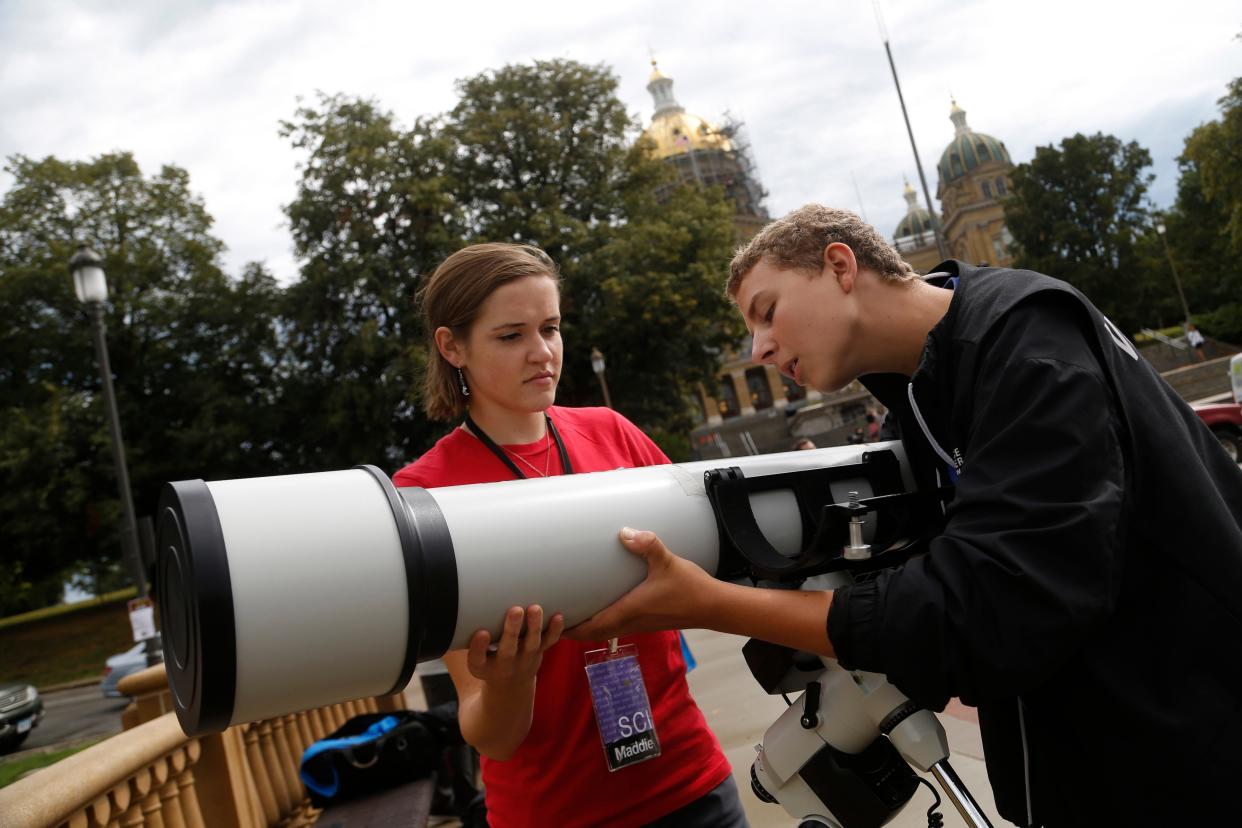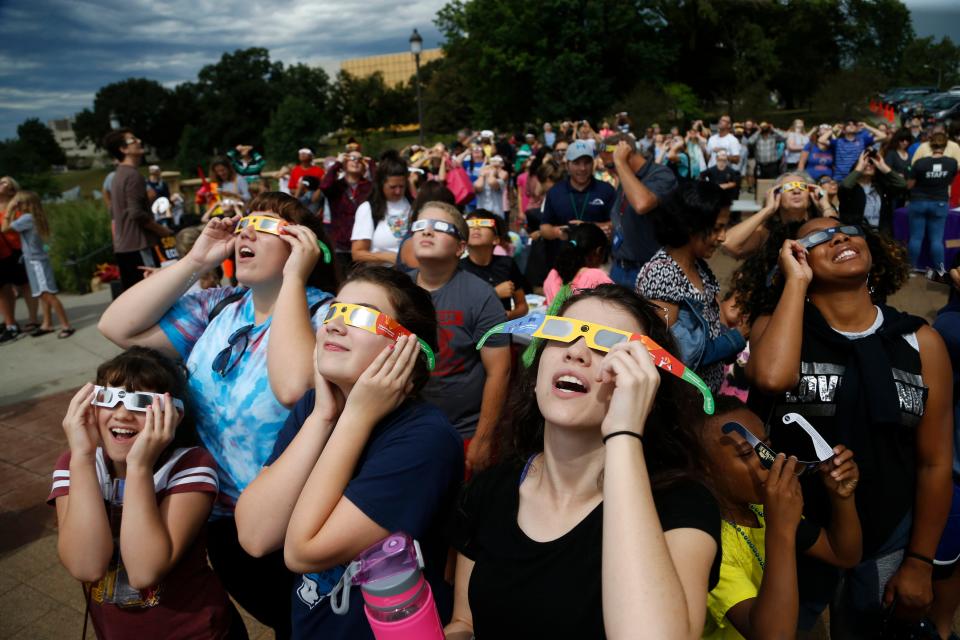A rare solar eclipse will occur on April 8. Here's a list of viewing events in Story County

Though the total solar eclipse on April 8 won't be visible in Story County, residents can still enjoy a partial viewing, as well as several eclipse-themed activities.
The partial solar eclipse will be visible starting at 12:39 p.m. in the southwest part of the state. It will end at 3:18 p.m. on the eastern border.
According to the National Solar Observatory's Total Solar Eclipse Interactive Map, the partial eclipse will start in Ames at 12:44 p.m. and end at 3:13 p.m.
More: Find out who the candidates are for Story County's primary election in June
McFarland Park is hosting day of events
Story County Conservation is hosting a viewing party from 12:45 p.m. to 3 p.m. at McFarland Park on Monday, April 8. Guests are welcome to come and go as they please.
The conservation will have ISO-approved solar viewing glasses and a safe solar viewer provided by Ames Area Amateur Astronomers. There will also be some hands-on activities and games to help participants learn more about the solar eclipse.
Activities and games at the viewing party will include an information table with a 3D model, a DIY pinhole projector, a glasses decorating station, eclipse chalk art, shadow tracing, a totality toss game, and a Jeopardy/ astronomy quiz game.
More: Vivian Kahler of Collins-Maxwell is the Ames Tribune's Student of the Week
Ames Public Library holds eclipse education events
An eclipse information session will be held at 6 p.m., Tuesday, April 2 at the Ames Public Library in the Danfoss Room.
Speakers from Ames Area Amateur Astronomers will talk about solar eclipse tracking, facts, and techniques to view the historic celestial event. A limited number of eclipse glasses will be available to take home.
Families can also attend a special “Storybook Science” event about eclipses at 10:30 a.m., Friday, April 5.
More: City officials alter wetland regulations in Ames, focuses on preservation
What makes this eclipse special?
A total solar eclipse occurs when the moon passes between the sun and the Earth. The sky will darken as if it were dawn or dusk since the sun's face will be completely blocked.
The sun will be fully blocked in Texas, Oklahoma, Arkansas, Missouri, Illinois, Kentucky, Indiana, Ohio, Pennsylvania, New York, Vermont, New Hampshire and Maine, and small parts of Michigan and Tennessee.
The last total solar eclipse visible in North America was in 2017, and according to NASA, there will not be another visible one in the United States until 2044.
Where can you see the total solar eclipse?
NASA lists 13 cities in the United States where the total solar eclipse can be seen on April 8.
"What's really interesting about this eclipse is the path of totality is going through a lot of major cities this time around," Kerton said. "A lot more people will be able to see this one without having to travel, hopefully."
The 13 cities and the time of maximum totality are:
Dallas, Texas: 1:42 p.m.
Idabel, Oklahoma: 1:47 p.m.
Little Rock, Arkansas: 1:52 p.m.
Popular Bluff, Missouri: 1:56 p.m.
Paducah, Kentucky: 2:01 p.m.
Carbondale, Illinois: 2:01 p.m.
Evansville, Indiana: 2:04 p.m.
Cleveland, Ohio: 3:15 p.m.
Erie, Pennsylvania: 3:18 p.m.
Buffalo, New York: 3:20 p.m.
Burlington, Vermont: 3:27 p.m.
Lancaster, New Hampshire: 3:29 p.m.
Caribou, Maine: 3:33 p.m.
NASA has put together an interactive map, which allows viewers to see the eclipse timing in their city.
Where can you find eclipse glasses?

Looking at the sun without proper eye protection for even a short time can be harmful to your eyes. According to the American Academy of Ophthalmology, some people can even suffer blindness.
Sunglasses will not provide the proper eye protection to look directly at the sun. Eclipse watchers should wear protective eclipse glasses or a special solar filter.
Eclipse watchers can find protective glasses by checking the list of reputable manufacturers and authorized vendors from the American Astronomical Society (AAS).
Those traveling to areas of totality are encouraged to take their glasses off when the moon completely blocks the sun to see this rare phenomenon.
Celia Brocker is a government, crime, political and education reporter for the Ames Tribune. She can be reached at CBrocker@gannett.com.
This article originally appeared on Ames Tribune: Solar eclipse events being held around Ames and Story County in April

